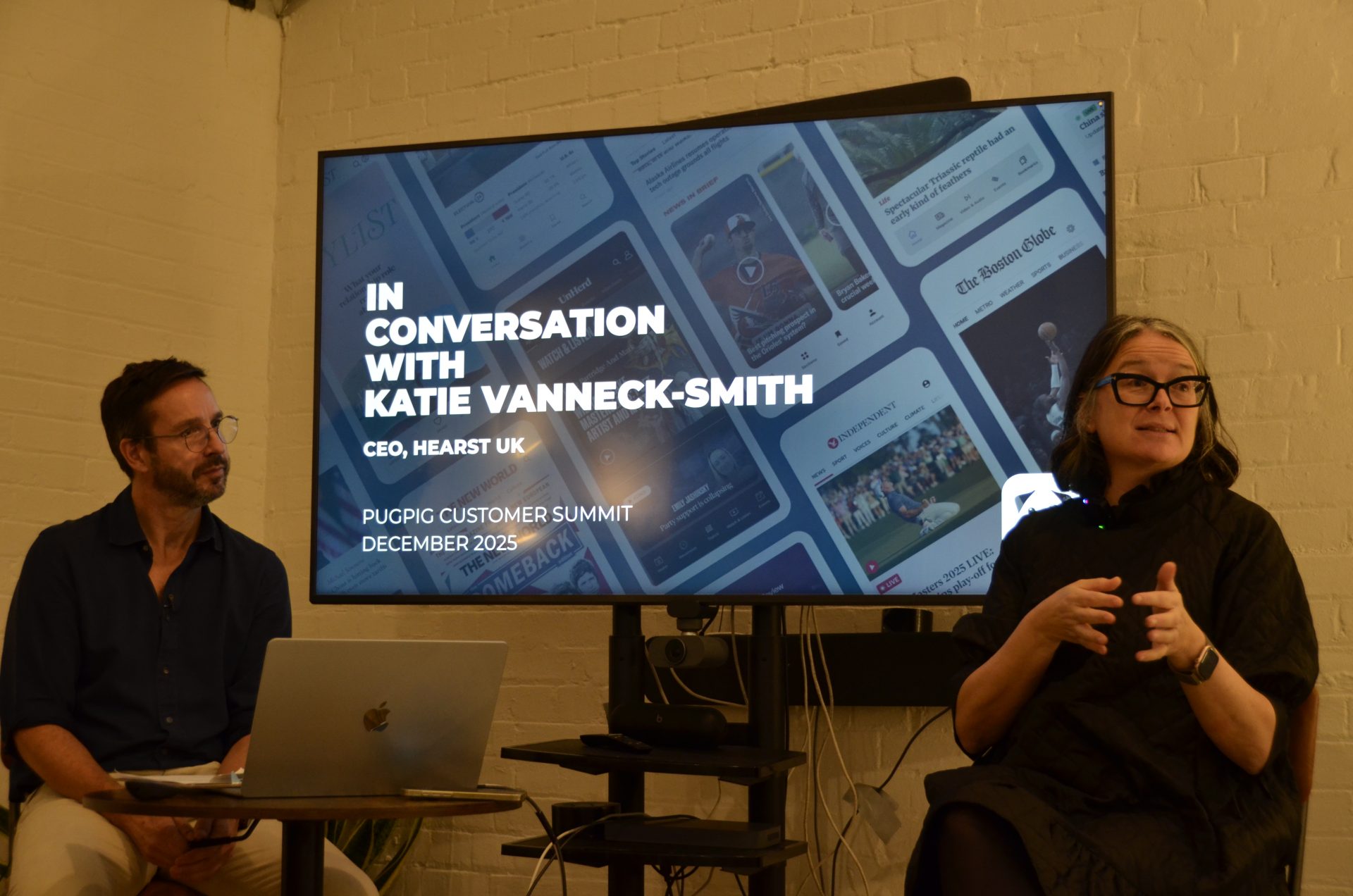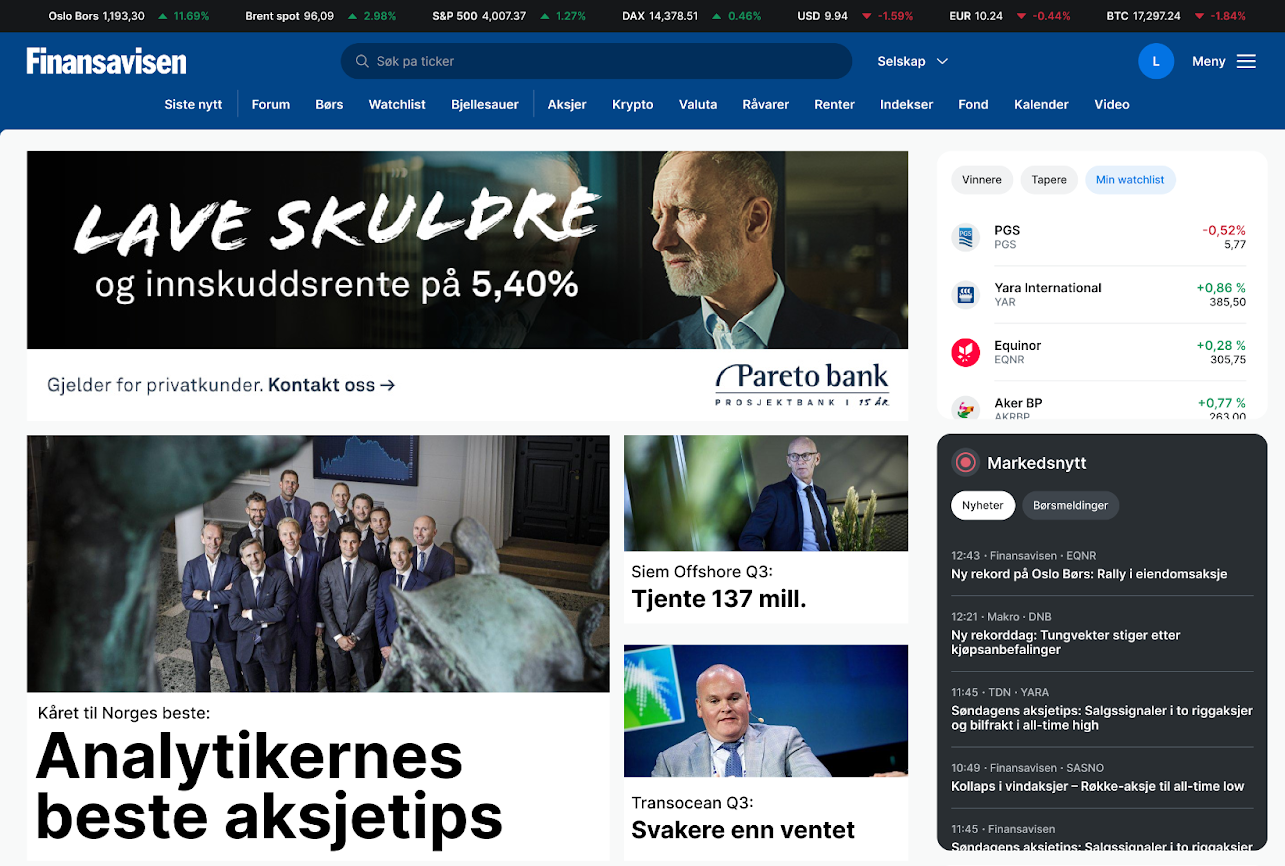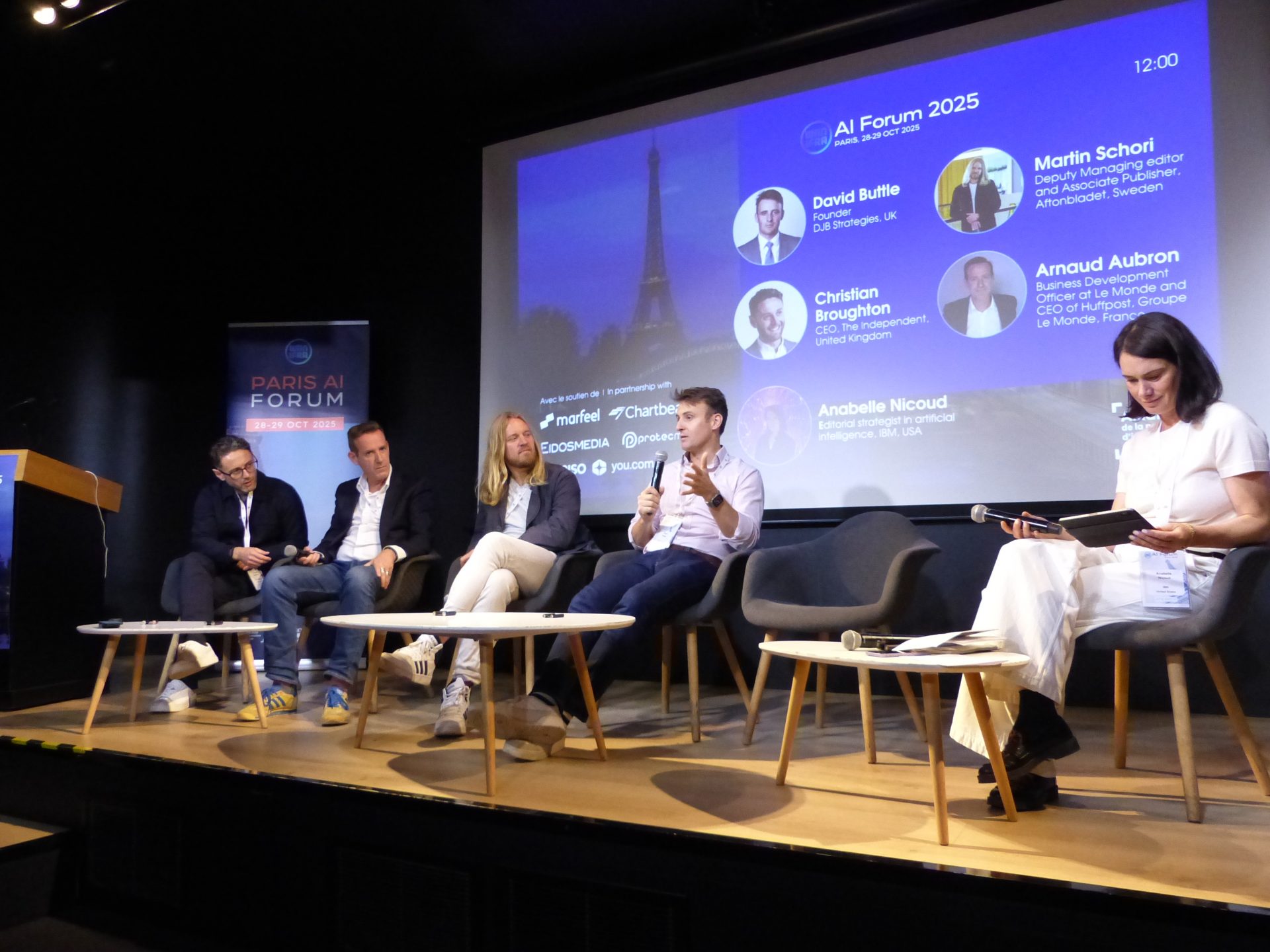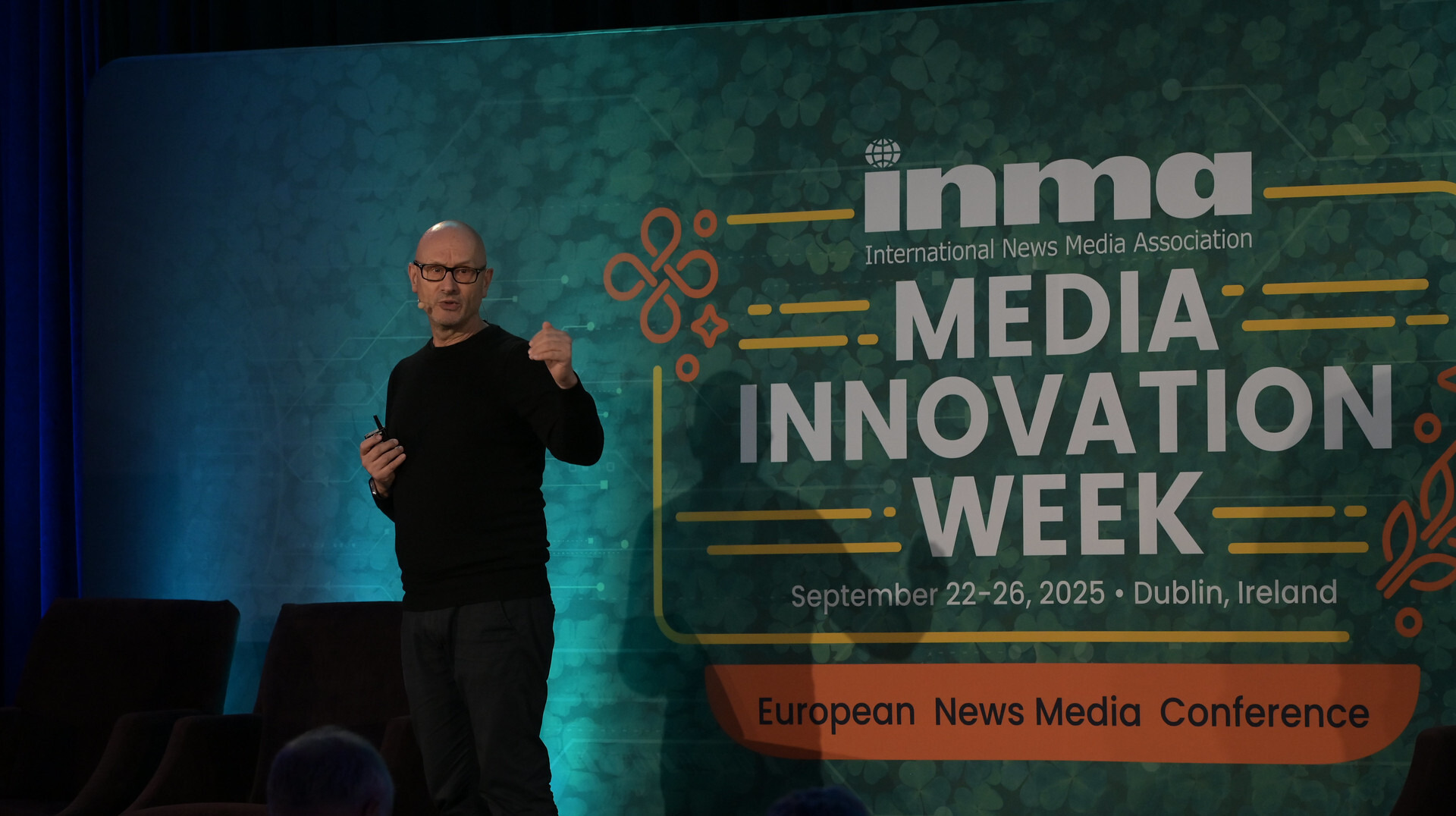
Newsletter
Newsletter
WhatsApp can help publishers acquire new mobile users, which opens up opportunities to drive app downloads.
22nd November 2024

By James
The Guardian made a splash recently when it announced that it would stop posting from any of their official accounts on the social media site X, saying the negatives now outweigh the “benefits of being on X”.
In reality X, and Twitter before it, played an outsized place in media mindshare that didn’t translate into much traffic for most sites, outside of a few niches, namely sports and politics. This was especially true for local news sites. Musk’s focus on political influence rather than user or brand safety has changed the risk-reward calculus of remaining on X.
A case in point: Last year, US public radio broadcaster NPR and TV broadcaster PBS, both stopped posting to X after Musk branded them “U.S. state-affiliated media”, which they saw as an attempt to undermine their journalistic credibility. Based on an internal memo acquired by Nieman Lab, traffic from X to NPR only dropped from 2% to 1%.
Media organisations are adapting to changes at X, Facebook and other social networks, with a greater focus on translating brand awareness developed from their off-platform activities to direct relationships on their own properties. We know that publishers and broadcasters are looking for new opportunities in third-party platform audience development, and we see a way to use WhatsApp to not only drive users to your content but also grow the users of your app.
After a period in which Meta’s platforms – Facebook, Instagram and WhatsApp – came to dominate social media, we’re now in a period of change again. Young, mobile audiences are driving an explosion in the use of short-form, vertical video on TikTok, Instagram and YouTube.
Elon Musk’s disruptive management of X opened the door to competitors. First Meta launched Threads, and then Bluesky benefited. Traffic to Bluesky has grown 500% and users have surged to 20 m (at the time we hit publish) since Donald Trump’s election. Bluesky remains far short of the over half a billion users still on X as of last September and still has ground to make to top Meta’s Threads.
This continues what the Reuters Institute Digital News Report for 2024 called the “great platform reset”. New social networks are gaining traction as old ones lose users and mindshare, and of course, the platforms’ relationship with media is changing as well.
Whilst The Guardian won’t stop users from sharing their content, their move away from X is a sign that (some) publishers are finally willing to move on from reliance on social platforms. It’s a rational business move as traffic from social platforms deteriorated massively over the last couple of years. The Wall Street Journal recently demonstrated that whilst podcast use has boomed and TikTok has become a go-to news source for millions, traditional publishers have suffered from a huge decline in referrals. Data featured in the WSJ and compiled by Similarweb showed that traffic to HuffPost, the New York Times, WSJ and Washington Post has dropped from 20% to 60% since June 2022. Social media platforms, and X in particular, no longer play as vital of a role for publishers as they used to.
Social networks will continue to feature in audience development. However, instead of focusing on building a large off-platform following, the goal is to use them as the top of a funnel for building direct relationships with audiences. More than three-quarters of news organisations (77%) told the Reuter’s Institute’s Nic Newman that their response to the decline in social traffic would be to invest in their websites, apps, newsletters and podcasts.
With changes to social and search leading to declines in referrals, media organisations are looking for new sources and methods for audience acquisition. Two have shown promise, Google’s Discover and Meta’s WhatsApp. Last September, WhatsApp added a new feature: channels. It immediately captured the attention of several publishers, who saw it as a way to directly connect with new audiences whilst also extending their reach for existing cohorts. Some were given early access including the UK newspaper group Reach, which had already had significant success with another WhatsApp feature, communities, where they had achieved message open rates of around 90%.
Reach’s use of WhatsApp has steadily increased since they won the innovation prize at the Press Gazette Future of Media Awards last September, and interest in WhatsApp channels is growing amongst other publishers too, with major international news organisations developing massive followings. The New York Times has 13m followers on its channel, and BBC News has 10.4m. In a recent piece, Esther Kezia Thorpe writing on Digital Content Next discussed the approach that Reach, Bloomberg and Yahoo Finance have all taken to WhatsApp channels over the last 12 months.
What sets channels apart from WhatsApp’s other features such as chats and communities is that they operate as a one-way broadcast tool. This is particularly well suited to publishers looking to reach new audiences by (partially) replicating the approach that used to work well on Facebook and X.
Furthermore, WhatsApp is popular outside of Europe and North America in a way that X/Twitter never was, and both Bloomberg and Yahoo Finance mentioned that this was a primary reason for their interest in the tool. As Katie Boyce, Head of Digital Editorial at Bloomberg pointed out, they have a “robust global audience”. Whilst Yahoo Finance’s Head of Distribution, Michael Kelley saw the opportunity to go and “meet different audiences”, noting that as an early mover on a new platform they were at an advantage to grow audience share before the platform became crowded.
The three publishers took slightly different approaches to setting up channels. Whilst Yahoo Finance chose to concentrate on a single channel, Bloomberg launched region-specific channels, and Reach, already having regional communities, decided to focus channels on content areas. These different approaches reflected the publishers’ unique goals. Yahoo Finance wanted to build general brand awareness; Bloomberg aimed to speak to audiences they don’t necessarily reach; and Reach wanted to evolve their approach on WhatsApp to increase engagement.
Ultimately, all three viewed WhatsApp channels as an opportunity to experiment. Kelley at Yahoo explained that he was “encouraging [their] editors to experiment, have fun, try to see what the audience is reacting to”. Meanwhile, Reach looked at the regional makeup of their channels to see if commissioning content they think is relevant will increase engagement. Katie Boyce from Bloomberg probably summed it up best, saying, “WhatsApp [is] an experimental platform, particularly in key international markets where we can reach new audiences.”
As a new-ish platform, the early adopters have encountered some challenges. Reach noticed that whilst channel users tended to grow very quickly, the number of page views to Reach-owned properties was lower than they got from their communities. When Dan Russell, Reach’s Audience and Content Director, spoke to the World News Media Congress he pointed out that their 2.3 million channel members only generated around 1 million page views a month. Stil, the average community reader would each view one page each. However, given that Reach has almost ten times more channel followers than community members, the macro effect of channels is important.
For Yahoo Finance, the measurement of channels is minimal, which has left them unsure of how to optimise their approach and define their publishing cadence. Whilst Yahoo’s Kelley understood that “it takes time for the platform to figure out and build, from a product and engineering standpoint, those robust back-end analytics”, it is likely a reason why all three publishers remained hesitant with their approach. Moreover, whilst the broadcast mechanism of the platform is key to publishers, the responses from followers are limiting. Users can only react to a broadcast, rather than comment or engage more deeply. And of course, this being a Meta-owned platform, publishers are all too aware of the historic difficulties in working with Facebook and Instagram.
The key for publishers experimenting with WhatsApp channels is to view them in the context of their overall strategies. As Boyce from Bloomberg pointed out, their “top priority from a distribution perspective is to build direct connections with [their] audiences”. This means a publisher should treat it like any other acquisition tool and focus on converting light engagement within their channels to deeper engagement via their newsletters, subscriptions, websites and apps. As WhatsApp users are predominantly mobile, it makes sense to pay particular attention to the role of the publisher’s own app in the engagement mix. There are a few important actions to consider to support this:
Overall, WhatsApp channels provide an all too rare opportunity for publishers to connect with new audiences at the top of the funnel. However, the days of high-volume free traffic are over, and a publisher would be unwise to think that WhatsApp channels signal a return to social platforms directing users to publishers. Therefore, it is vital to take a similar approach to Bloomberg, Yahoo Finance and Reach. View WhatsApp channels as an opportunity experiment but remain focused on the need to bring users through to their owned mobile experience to drive engagement, conversion and, ultimately, revenue.
Here are some of the most important headlines about the business of news and publishing as well as strategies and tactics in product management, analytics and audience engagement.

Newsletter

Newsletter

Newsletter

Newsletter

Newsletter